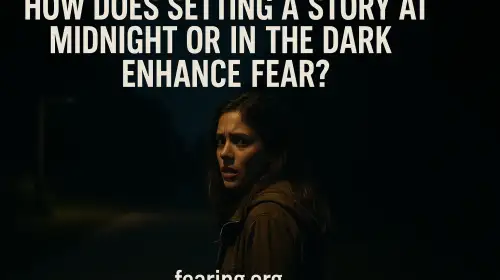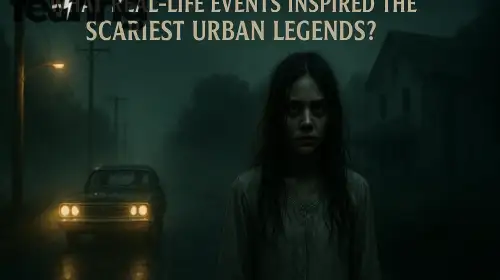Ghost stories have haunted human imagination for centuries, but the best ones don’t just rely on cheap scares or flickering lights. A truly powerful ghost story for adults does something deeper — it unsettles the mind, touches the heart, and lingers long after the final page or closing scene.
For grown audiences, fear is no longer about monsters in the closet. It’s about memory, regret, grief, and the question of what remains when life ends. The perfect ghost story doesn’t just frighten; it makes you feel haunted.
A Sense of Emotional Truth
At the heart of every memorable ghost story lies emotion. The most chilling tales are rarely about the supernatural itself, but about the human experience tied to it. Adults aren’t frightened by the unknown alone — they fear loss, guilt, and unresolved love.
Think of the best ghost stories you’ve encountered. The ghosts weren’t random; they had purpose. They symbolized something that refused to fade — a mistake, a secret, a memory. The reader feels the haunting not as a distant event, but as a reflection of their own life.
Emotion grounds the impossible. Without it, even the most terrifying apparition feels hollow.
Atmosphere That Creeps, Not Screams
Adults respond to tension, not shock. The finest ghost stories know how to whisper. An unsettling atmosphere — a half-open door, a chill in the air, the sound of slow footsteps upstairs — builds more fear than any loud surprise could.
A strong atmosphere relies on suggestion. It lets the audience’s imagination do the heavy lifting. Every sensory detail should work together to create unease:
The faint scent of perfume where no one stands.
A chair rocking long after someone has left it.
A light that refuses to stay off.
In adult horror, subtlety is the author’s sharpest tool. The ghost doesn’t need to appear — it only needs to be felt.
Psychological Depth and Ambiguity
The best adult ghost stories blur the line between the supernatural and the psychological. Is there really a spirit, or is it guilt, madness, or trauma taking shape? That ambiguity keeps readers engaged and unsettled.
Fear thrives in uncertainty. Once the ghost is fully explained, the magic dies. Leaving room for interpretation respects the intelligence of an adult audience — and mirrors real life, where answers are rarely neat.
When readers can’t tell whether the haunting is external or internal, the story achieves true power. It stops being a tale about a ghost and becomes a mirror for the mind.
A Connection to the Past
Ghost stories are, by nature, stories of history. Every haunting begins with something left unresolved — an injustice, a loss, a love that never ended. For adults, the past often feels closer than the future, and a ghost is the perfect embodiment of that tension.
Good writers treat history not as decoration, but as foundation. The setting itself becomes a relic: an old mansion that remembers its owners, a decaying hospital echoing with forgotten pain, a letter found too late. The ghost doesn’t just haunt the characters; it haunts time itself.
When the past refuses to stay buried, the reader feels that weight — and that’s where the fear becomes timeless.
A Setting That Breathes
A believable environment gives the ghost somewhere to exist. Adults crave immersive realism even in the midst of the uncanny. The setting should feel tangible — you can smell the dust, hear the floorboards creak, and sense the temperature drop.
Isolation works beautifully here. A remote countryside, a seaside hotel in winter, or a narrow apartment in a quiet city — each setting traps the characters physically and emotionally. A good ghost story uses space like a stage, with shadows and silence as supporting actors.
When the setting feels alive, the ghost doesn’t need to scream. The building does it for them.
Pacing That Rewards Patience
Adult readers value suspense built slowly. A great ghost story doesn’t rush; it lingers. Fear grows in silence and stillness. The first few pages or scenes should plant subtle hints rather than overt horror.
Moments of calm are essential. They make the eventual revelation — a whisper, a reflection, a sudden realization — far more effective. The best stories maintain tension through rhythm, alternating between quiet dread and emotional release.
This structure mirrors real fear: it arrives slowly, unnoticed, and then takes hold all at once.
Themes Beyond the Supernatural
A ghost story for adults should be about something. The haunting must carry meaning. Perhaps it explores grief and the inability to let go. Maybe it questions morality, forgiveness, or the permanence of guilt.
The supernatural becomes a lens, not the subject itself. The story may feature a ghost, but its real focus lies on the living — the people who must face what they’ve done, or what they’ve lost.
When the reader closes the book or leaves the theater, they shouldn’t just be scared — they should be thinking.
Restraint in Revelation
Inexperienced storytellers show too much. The masters hold back. A faint outline glimpsed in candlelight, a blurred face in a photograph — these are more haunting than any fully revealed phantom.
Once the ghost is seen in full light, it becomes ordinary. True horror depends on mystery. The unseen stirs imagination, and imagination is far crueler than any description could be. Adults understand this instinctively; they know that what remains hidden is always more dangerous.
Authentic Voices and Realistic Reactions
For fear to work, the characters must feel real. An adult audience won’t believe in perfect heroes or mindless victims. They want flawed, relatable people who react as they themselves might — skeptical at first, then slowly unraveling as logic fails them.
A believable voice turns the supernatural into reality. When a character who doesn’t believe in ghosts starts to sound afraid, the reader believes too.
The Haunting That Never Ends
The best ghost stories don’t end when the lights come on. They linger in memory, reshaping the familiar. You might find yourself hesitating before looking into a dark mirror or walking through a quiet hallway.
That lingering unease — the feeling that something followed you out of the story — is the final proof of success. The ghost’s job isn’t to scare you once; it’s to stay with you.

